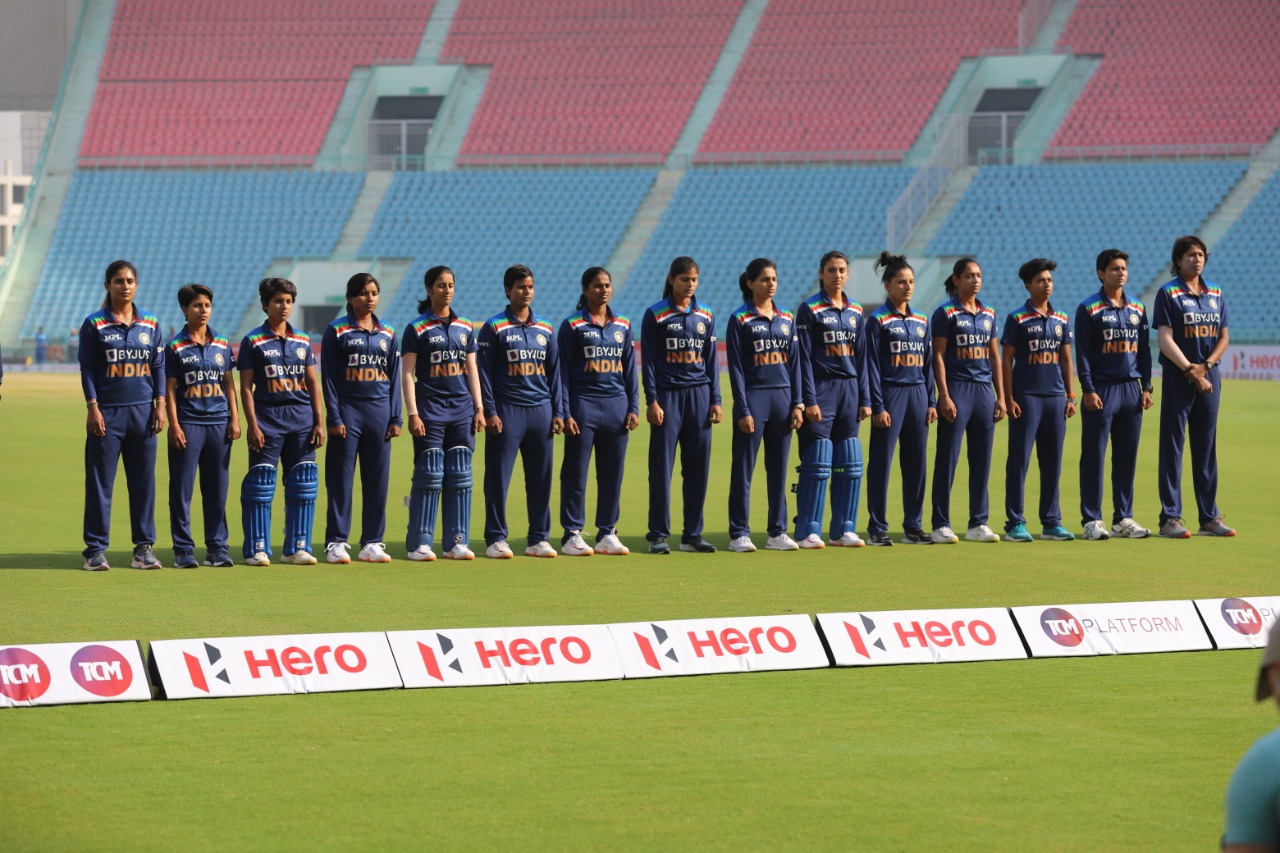Questions and talking points from India women’s new annual central contract announcement
On Wednesday, the Board of Control for Cricket in India (BCCI) finally - and by finally, we mean after seven months - announced the annual central contract for the Indian women’s team for 2020/21. There was the large surprise of omission of Veda Krishnamurthy and Ekta Bisht but is that it all?

Poonam Yadav’s importance to this setup
Against South Africa, in their last series, the women’s team failed to capture the ODI series and largely it was down to poor bowling displays. Not only did they allow the South African openers to tee off, they also didn’t quite exert pressure with the ball. Instrumental in India’s success over the last year, Poonam Yadav didn’t step up the mark in that ODI series and only played one T20I in the three-match series. That doesn't, however, take her importance from this setup. In 2019, she finished with 19 wickets from 11 games and she has only played four games since then.
In T20Is, last year, she finished with 10 wickets, becoming an integral part of the bowling setup. Looking at India’s schedule for the next year, with the 50-over World Cup coming up, it is evident that Poonam’s influence on this setup will be massive. Combine that with the two Tests that they are set to play, a lot would depend on the leg-spinner in the coming days, for the women’s team, which is also the major reason behind her retaining her place at the top of the contract list, alongside Harmanpreet Kaur and Smriti Mandhana.
Shafali Verma’s contract step-up also means she’s going to be multi-format?
Having made her breakthrough into the setup in September 2019, this promotion was always on the cards - especially considering how she turned the cricketing world upside down in the span of a year. Since her debut, Shafali has arguably been the difference-maker in this Indian T20I setup, with her aggression ranking up top with some of the best names in women’s cricket. Not just that, she has also established herself as the No.1 T20I player, way ahead of Australia’s Beth Mooney. Against South Africa, once again she made a stellar impact, with scores of 60, 47 and 23.
Now that’s not the only reason behind her promotion on the contract, she’s made her way into the ODI squad for the first time, which means that she could well be India’s new opener in the 50-over format. India tried as many as two openers - Jemimah Rodrigues and Priya Punia - to partner Smriti Mandhana in the ODI series but Shafali Verma might well be the force that is needed up top. With talent like she has at such a tender age, this subsequent promotion in the contract could only mean that she’s going to be a multi-format player, soon enough!
Veda Krishnamurthy and Ekta Bisht’s omission
Since 2018, Veda Krishnamurthy has stayed as a bystander in the India women’s 50-over plans, with inconsistency being cited as the major reason. Given that she was brought back into the setup for the T20 World Cup in Australia, where she made useful contributions in the middle-order, it was expected that she might as well find her place in the new contract list. However, she misses out, which means that till the 2023 T20 World Cup, it might be a far stretch for the selectors to reconsider their plans and bring in the talented batter.
Ekta Bisht was in the ‘B’ category from last year’s contract. But since 2019, she hasn’t featured in the Indian setup, neither in ODIs nor in T20Is. While she has certainly put up performances this year in the 50-over domestic tournament, where she picked up 13 wickets plying her trade for Railways. From last year’s contract, the omission of the two were rather inevitable, considering that the selectors decided to moved on.
The ‘not-so’ big-pay-cheque
a) "If the women’s team is not winning any tournaments, how can the BCCI pay them so much?"
Pretty weak argument, right there. Since 2017, in the last three years, the women’s team have reached one World Cup final and two World Cup semi-finals, where the men’s team haven’t reached a World Cup final since 2011. Them winning the tournament shouldn’t equal how they are being treated as a side. Post the 2020 T20 World Cup, where they demolished all sides, en route to the final, the women’s team have just played one series. That’s nearly 365 days without cricketing action.
b) "They don't bring in the viewership, why should BCCI treat them well?"
Now let me put this across - La Liga, in comparison to the English Premier League, fails to garner attention. Now does that mean that it is upto the players like Lionel Messi and co to increase the viewership? Let’s not even get there because the women’s team have just played one series since the 2020 T20 World Cup. This is where we have to draw the line. For women’s cricket to grow, the BCCI needs to take utmost care, and by that I mean organise tours on a consistent basis.
c) So what to do?
And they don’t have to look to other sports for inspiration, they just have to look at Pakistan and Australia. Pakistan, in their latest parental policy, allows players - women and men - to get paid leave during periods of pregnancy and upon the birth of a child, with 12 months of paid leave for women’s cricketers. Now it’s totally impossible for the BCCI to implement an Australian cricket type system, with near equal pay, but what is possible, however, is providing the players with conditions and supporting them with bonus pays, travel entitlements and increasing the prize money pool. When other countries have seamlessly done the same, the BCCI could well implement such a system.

Comments
Sign up or log in to your account to leave comments and reactions
0 Comments